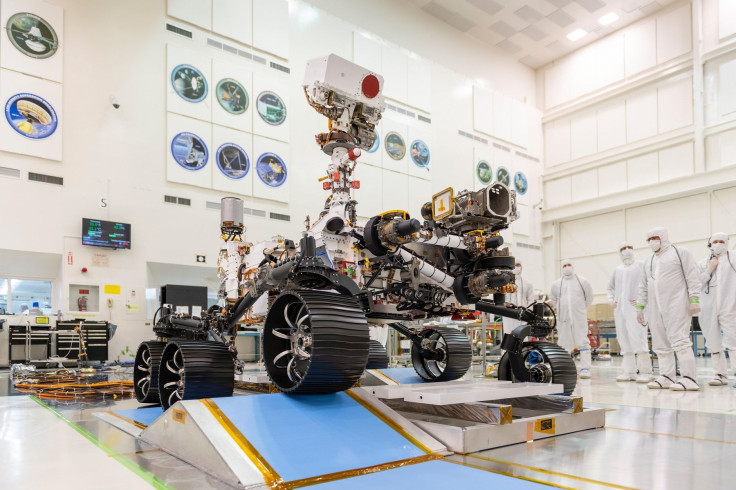Mars 2020 Rover 'Earned Its Driving License' By Passing First Driving Test

KEY POINTS
- The Mars 2020 rover just passed its driving test at NASA's Jet Propulsion Laboratory
- Its wheels were designed to withstand the pressures of the Martian lansdcape
- The rover is equipped with tools that will help it make more driving desicions on its own
- The Mars 2020 roveris set to launch in July or August 2020
The Mars 2020 rover just took another step closer to Mars after passing its first driving test at NASA’s Jet Propulsion Laboratory on Dec. 17. During the 10-hour marathon, Mars 2020 steered, turned and drove in 1-meter increments over small ramps covered with special mats, demonstrating that all its systems are working and performing well. As such, engineers are confident that the rover will work well on Martian soil just as It did here on Earth.
“Mars 2020 has earned its driver's license,” lead mobility systems engineer for Mars 2020 Rich Reiber said. “The test unambiguously proved that the rover can operate under its own weight and demonstrated many of the autonomous-navigation functions for the first time. This is a major milestone for Mars 2020.”
The rover has six wheels, each with a motor of its own, while the two front and two back wheels also have individual steering motors. This would allow the rover to swerve, curve, make arcing turns and to turn a full 360 degrees in place.
While Mars 2020's wheels are made of the same material as the Curiosity rover's wheels, they are slightly bigger and narrower. Further, the patterns on the Mars 2020 wheels are straighter and are twice as many compared to the chevron pattern on Curiosity's wheels. This is because extensive testing has proven that these patterns withstand pressure from sharp rocks better while also working just as well on sand.
These significant changes are likely in response to what happened to Curiosity's wheels, which were designed for “off-roading” but accumulated holes due to the pressure from sharp rocks.
Mars 2020 is also designed to make more driving decisions on its own as it fulfills the mission's ambitious science goals, primarily the mission to find signs of past microbial life. As such, it is equipped with high-resolution wide-field cameras, an extra computer for processing images and making maps, as well as a more sophisticated auto-navigation software.
Simply put, Mars 2020 is specially designed to be smarter and more durable for its mission. In fact, the upgrades would allow the rover to travel an average of 650 feet per Martian day. By comparison, the current record for longest longest drive in a single Martian day was set by Opportunity rover at 702 feet. With Mars 2020, the goal is to turn the record into the average.
Mars 2020 is set to launch on July or August 2020, and land at Mars's Jazebo Crater on Feb. 18, 2021.
© Copyright IBTimes 2024. All rights reserved.






















